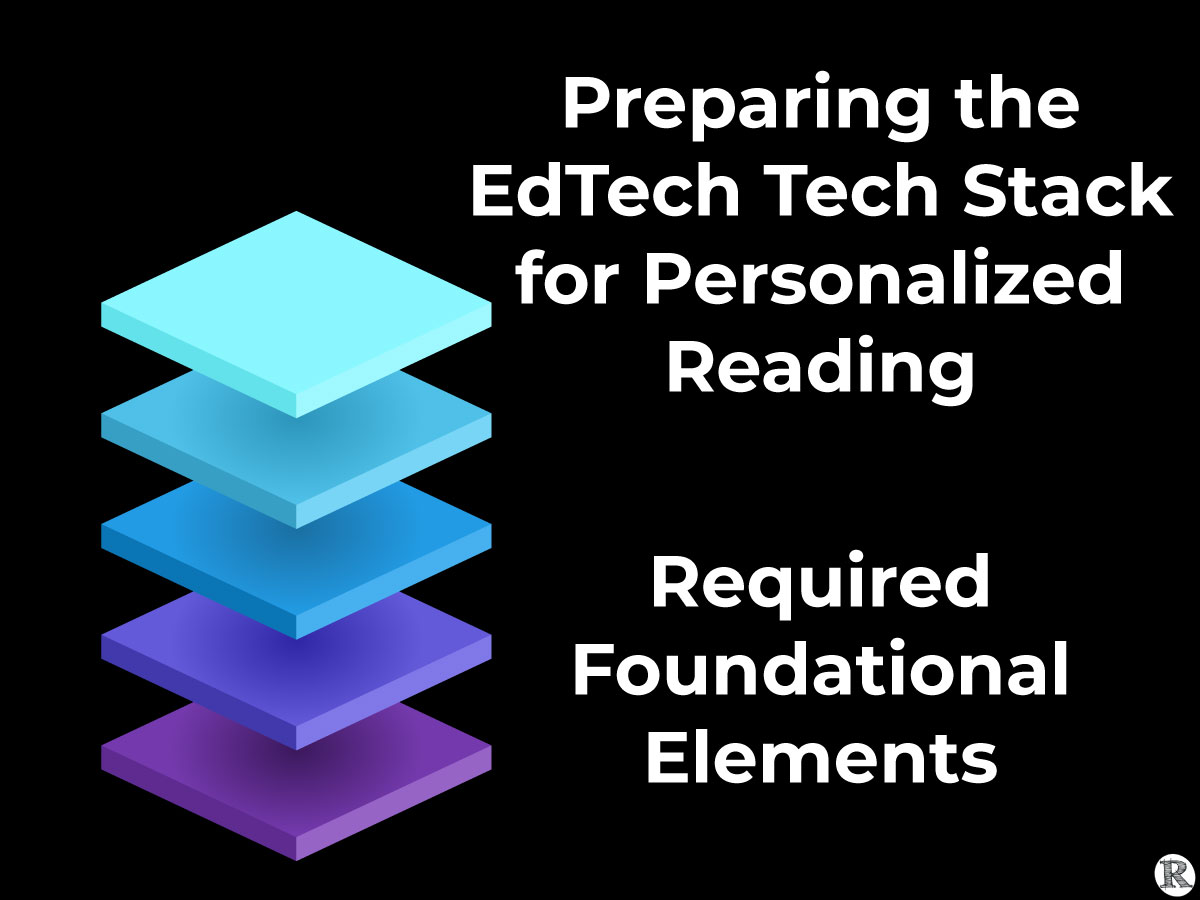Preparing the Tech Stack for Personalized Reading
Required Foundational Elements
Reading proficiency is a foundational skill, yet far too many students in the United States and around the world struggle with reading comprehension. As learning continues its shift to digital platforms, we face a pivotal opportunity: using technology to personalize the reading experience in ways that support and empower every learner.
Emerging research underscores a powerful, often overlooked aspect of personalization—typography. The evidence is clear: “one font doesn’t fit all.” Subtle changes in how text is presented—such as text size, shape, and spacing—can lead to measurable gains in reading speed and comprehension. This discovery challenges EdTech companies to go beyond traditional content delivery and design platforms that adapt visually to the needs of individual readers.
The Case for Dynamic Text Personalization
Unlike static print materials, digital texts offer a key advantage: flexibility. This flexibility allows for customization of how information is displayed—opening the door to tailoring perceptual elements of text for each reader. With personalized controls over font family, text size, character and line spacing, and color, students can optimize their reading environment, leading to:
- Improved comprehension and accuracy
- Faster reading speeds
- Increased enjoyment and engagement
- A more equitable educational experience
Studies confirm these benefits across diverse age groups and reading abilities. In one K–8 study, readers showed more than an 18% gain in word-level comprehension and over 21% improvement in passage-level comprehension when reading in their personal “best” font format compared to their “worst.” Reading speed also increased significantly—by 27 words per minute, a 20.8% improvement. Notably, the greatest gains were observed in students with the lowest initial reading performance.
Despite this potential, many educational platforms lack the technical infrastructure to support such personalization. Building this capability requires a thoughtfully designed tech stack focused on dynamic text control and personalization.
Foundational Elements of a Personalized Reading Tech Stack
To enable personalized reading experiences at scale, EdTech platforms must ensure that their technology stacks and digital capabilities are deployed in a way that enable student and educator success. They must include the following core architectural features:
1. Dynamic Text Rendering and Reflow
A flexible rendering engine must interpret and reflow content in real-time based on user settings. It should support seamless adjustments to font, spacing, and layout—ensuring accessibility across devices without sacrificing usability or aesthetic quality.
2. Comprehensive Text Personalization Controls
Platforms should offer granular control over text formatting. This includes options to adjust:
- Font family
- Text size
- Inter-letter spacing (tracking)
- Line spacing (leading)
- Character width
- Background and text colors
These controls should be accessible to students, educators, and parents, and easily modifiable in real time.
3. Variable Font Technology
Variable fonts offer a modern, efficient way to deliver personalization:
- Design Flexibility: A single font file contains multiple style axes (e.g., weight, width), allowing fine-tuned adjustments without distortion or artificial stretching.
- Performance Efficiency: One variable font file reduces the need for multiple static font files, improving load times and reducing server requests.
Integrating variable fonts into the stack enables high-performance, fine-grained non-destructive control over text appearance, producing visually consistent personalization.
4. Reader Profile Management
Once a student’s optimal reading format is identified, that configuration should be saved in a persistent reader profile. This ensures consistency across all texts, activities, and devices, creating a seamless and personalized experience throughout the learning journey.
5. Future-Proofing for Assessment-Driven Personalization
Looking ahead, EdTech platforms must prepare for integration with diagnostics that help identify a reader’s optimal format. Tools using AI, eye-tracking, speech recognition, or cognitive science could generate a personalized “reading token.” Tech stacks should be designed to accept and apply these tokens—automating the delivery of individually optimized text formats.
Building a More Equitable Future for Readers
The conclusion is inescapable: personalized typography is a powerful tool to help more students become confident, capable readers. The benefits are especially profound for younger learners and those with reading challenges. By meeting each student where they are—with text that fits their needs—we foster equity, engagement, and academic growth, potentially changing the student’s educational trajectory.
Educational technology companies, content publishers, and assessment developers all have a role to play. By embedding dynamic rendering engines, robust personalization controls, variable font support, and forward-looking profile management, we can reshape digital reading experiences for the better.
The research is in. The technology exists. Now is the time to act. Let’s build the platforms that today’s—and tomorrow’s—students deserve.
Learn More
-
One Font Doesn’t Fit all, article
-
One Font Doesn’t Fit all: The Influence of Digital Text Personalization on Comprehension in Child and Adolescent Readers, published paper
-
Digital information presentation guidelines are expanding to include recommended personalization features to better support the full population of readers.




